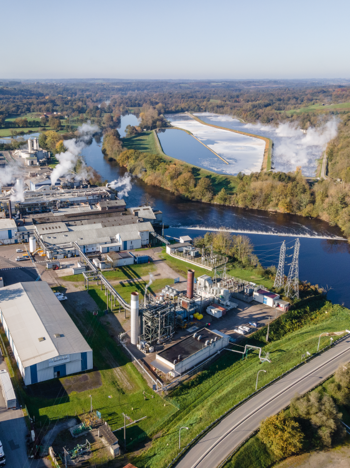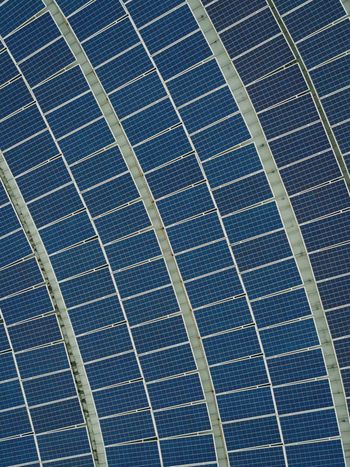Watts & Bits: How Power Grids and Cloud Computing Are Working Together to Implement “Utility 3.0” Through Electro-Cyber Integration
In our increasingly digital world, cloud computing and power grids are converging in ways that promise to reshape our society. Cloud computing, with its ability to orchestrate vast amounts of data and computing power, is transforming industries and everyday life. Similarly, power grids are evolving to integrate distributed energy resources and smart devices, driving the energy transition.

by Hiroshi Okamoto, PhD
CTO and EVP, TEPCO Power Grid
This article explores the powerful synergy emerging between these two domains. By integrating cloud technologies with power grids, we can address critical challenges such as balancing energy demand, managing complex power systems, and ensuring a sustainable future. This convergence, which I term "electro-cyber integration," holds the key to unlocking a human-centered and sustainable society.
In the following sections, I will delve into specific examples of how this integration will be implemented, from using artificial intelligence (AI) to optimize energy use to leveraging cloud-based platforms for grid management. I will also explore innovative TEPCO Power Grid’s (PG's) Machine-learning Energy System Holistic (MESH) concept to implement utility of future named “Utility 3.0,” which envisions a harmonious interplay between the cyber and physical worlds.
The electro-cyber integration is not just a technological advancement; it's a paradigm shift that promises to revolutionize how we generate, distribute, and consume energy, while simultaneously propelling advancements in digital technologies. This article serves as a guide to understanding and harnessing this powerful convergence for a brighter future.
Balancing Energy Demand with Cloud Computing
The AI Energy Paradox: Growth and Sustainability Concerns
The rapid growth of AI, particularly large-scale models (LLMs), is driving a surge in power consumption. This presents a challenge to balance the benefits of AI with the need for sustainable energy use. Figure 1 illustrates the rising demand from data centers in TEPCO PG's service area.

Figure 1 - Growth of Data Center Applications in TEPCO PG control area [1]
Bridging the Gap: Co-location and Intelligent Workload Management for Efficient Energy Use
One solution is to co-locate data centers with energy sources like nuclear or renewable plants. This minimizes transmission losses and reduces the need for grid expansion, while also ensuring a reliable power supply for these energy-intensive facilities.
Cloud computing's flexibility enables workload shifting. Applications with less stringent latency requirements can be run in regions with excess renewable energy. TEPCO PG is developing strategies to leverage this flexibility, optimizing energy use across the grid.
Training large AI models can be strategically scheduled during periods of low demand and lower CO2 emissions, such as spring and fall. This approach effectively utilizes the internet's vast storage capacity as a form of energy storage, aligning AI processing with renewable energy availability. I call this strategy "the summer and winter vacations of AI students."
Nodal Pricing: A Key to Greener AI
Nodal pricing is a system where electricity prices change based on location and time, similar to how highway tolls vary during peak hours. This dynamic pricing encourages using electricity when and where it's cheapest and cleanest, particularly from renewable sources.
For cloud computing, nodal pricing is crucial. It incentivizes shifting energy-intensive tasks like AI training to times and places with abundant renewable energy. This not only makes cloud computing more sustainable but also maximizes the use of green energy.
To extend this benefit to distributed computing, we propose to extend nodal pricing to distribution networks [1], creating an interconnected market that accounts for carbon emissions. This market could use a carbon price within nodal pricing or a separate system for trading carbon emissions data. This approach would give data center operators and investors a clearer picture of the environmental impact of their decisions, helping them to make more sustainable investment decisions.
Furthermore, accurate forward curves, derived from the nodal price spot market and incorporating CO2 emissions data, are crucial for data center operators and investors to make informed decisions about where to locate their facilities and when to schedule energy-intensive tasks.
By leveraging nodal pricing, forward curves, and managing workloads strategically, the cloud can actively contribute to decarbonization efforts while optimizing costs. This approach is essential for ensuring the sustainable growth of AI and a greener digital infrastructure.
Empowering the Grid with Cloud Technologies
The Evolving Grid: Challenges of Complexity and Data
The power system environment is becoming increasingly dynamic. The rapid expansion of distributed energy resources, heat pumps, electric vehicles, drones, and robots connected to distribution grids is creating complex, bidirectional power flows. Traditional monitoring and control systems are struggling to keep up with the pace of change and the increasing volume of data.
Cloud as a Solution: Agile Development and Data Management
Cloud computing can address this by building an integrated data infrastructure for the increasingly complex power system and enabling the agile development of loosely coupled applications. In Japan, a system to consolidate smart meter data from 10 Transmission and Distribution System Operators is being deployed on the cloud, showcasing its benefits.
Data and Operational Sovereignty: A Key Consideration for Critical Infrastructure
Globally, some utilities are starting to use cloud computing in Operation Technology (OT) domains, such as monitoring and control systems. Cloud-native IT systems for Operation and Maintenance (O&M), handling vast amounts of vision and sensor data, can leverage AI/ML to enhance operations and decrease labor requirements.
The biggest challenge in cloudifying critical infrastructure such as the power grid is ensuring data and operational sovereignty in the OT and privacy data domains, where high availability and rapid recovery are paramount. Sovereign clouds, such as those being deployed in Europe, may be the key to addressing these concerns.
Collaboration for a Better Future
MESH: A Holistic Approach to Energy Management
Collaboration between power grid and cloud operators offers mutual benefits, but it also brings broader advantages to society.
Figure 2 illustrates TEPCO PG's initiative called MESH (Machine-learning Energy System Holistic). This concept is based on analogy that compares cyberspace to the nervous system, the physical world to muscle system, and the power grid to the vascular system. As decarbonization progresses in power generation, the increasing share of intermittent renewable sources as well as base-load generation necessitates demand-side adjustments to balance supply and demand. This is similar to how the human body maintains homeostasis through neuro-vascular wiring (Figure 3) [3].
By utilizing the market mechanisms of the wholesale electricity exchange, fine-grained price signals can be transmitted to incentivize autonomous behavior changes in the cyber-physical space. Cloud computing enables not only the monitoring of vast numbers of distributed energy resources and consumer devices but also the flexible shifting of power demand through workload management.
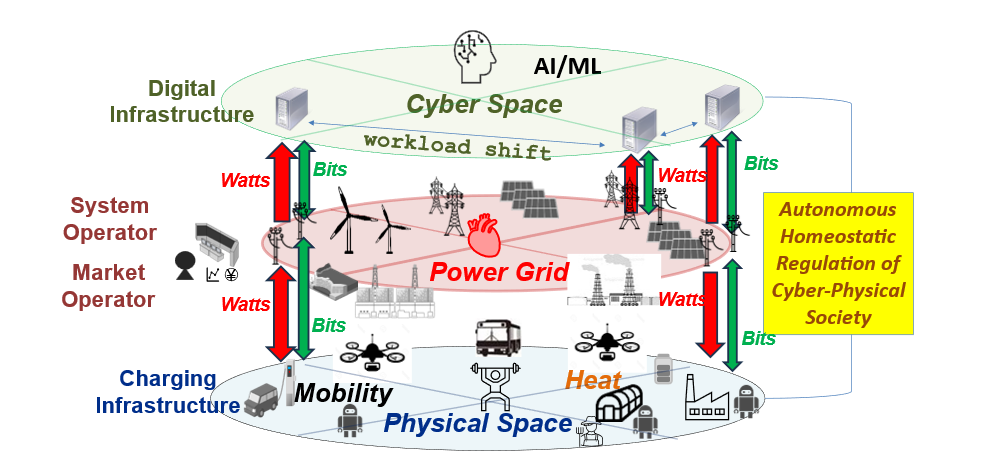
Figure 2 - MESH (Machine-learning Energy System Holistic) for Homeostatic Regulation in Cyber-Physical Society
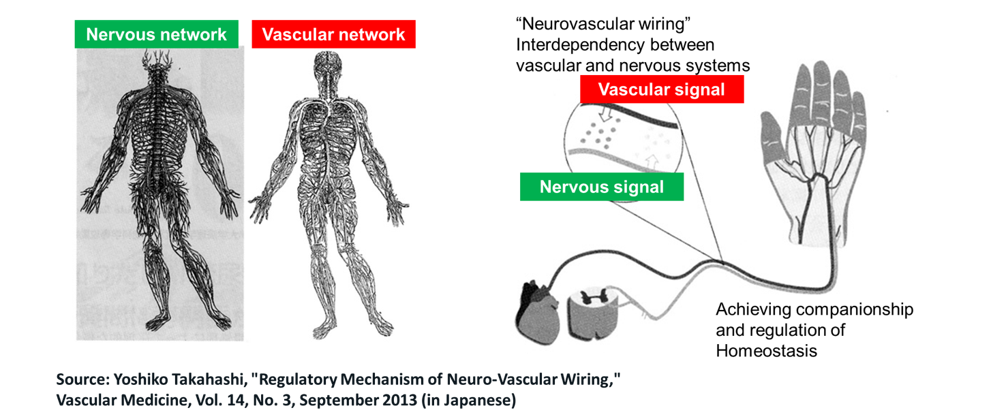
Figure 3 - Neuro-Vascular Wiring for Homeostatic Regulation in the Human Body [1]
Smart Mobility: Orchestrating a Sustainable Ecosystem
One example of MESH in action is an orchestration service for automated mobility (Figure 4) as proposed by the author [4]. By integrating price signals from the electricity market, the charging and discharging of self-driving electric vehicles and charging spots can be controlled to stabilize the grid and optimize charging costs. Additionally, digital twins of infrastructure on the cloud can be used to optimize drone routes for efficient infrastructure inspection and regional logistics. Combining these elements creates a mobility platform that optimizes charging costs and accumulates mobility data on the cloud for urban and rural area development.
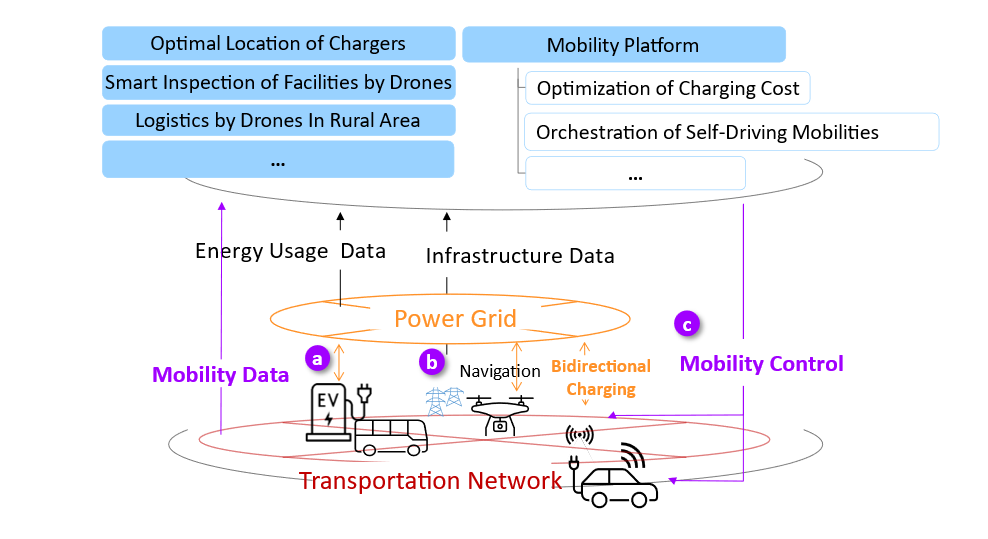
Figure 4 - Smart Mobility Platform
Global Connectivity: Optimizing Resources Across Borders
This concept can be generalized to encompass urban and rural area planning and global connectivity (Figure 5). Cyberspace is globally connected through optical fiber and satellite communication, allowing seamless utilization of resources. For example, Artificial Intelligence and Machine Learning (AI/ML) trained on surplus hydropower in Norway could be used for digital services in Tokyo.
Given the substantial cost advantages of digital infrastructure compared to physical infrastructure, a cyber-first approach is essential for maximizing the overall efficiency and sustainability of our interconnected world.
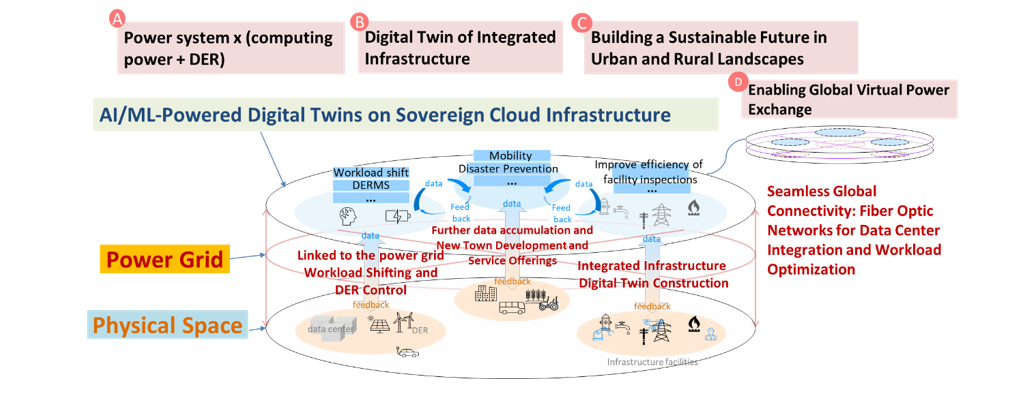
Figure 5 - Global MESH Interconnection: A Cyber-First Approach to Optimizing Resource Utilization
Layered Collaboration Framework: Building the Future of Electro-Cyber Integration
TEPCO PG proposes a layered collaboration framework (Figure 6) to integrate power grids with multi-cloud environments. This framework consists of:
- Foundation Layer: An energy management platform that interfaces with the power grid and operates across multiple cloud environments.
- Sovereign Cloud Layer: A secure and private cloud platform built upon the foundation layer, ensuring data sovereignty and regulatory compliance.
- GIS Layer: A Geographical Information System (GIS) layer that leverages the underlying cloud infrastructure to enable infrastructure inspection, mobility services, and spatial data analysis combined with digital twins.
- AI/ML Layer: A layer that provides cutting-edge Artificial Intelligence and Machine Learning (AI/ML) capabilities as Software-as-a-Service (SaaS), empowering various applications with advanced analytics and decision-making tools.
- M2M Layer: A software-defined foundation for low-latency Machine-to-Machine (M2M) communication, facilitating real-time interaction between the power grid, mobility devices (e.g., electric vehicles), robots, and other connected entities.
This layered architecture enables the delivery of a wide range of services, including traditional Transmission and Distribution (T&D) operations, innovative T&D solutions that leverage cloud computing for demand-side energy management, City OS platforms for smart city applications, and advanced mobility platforms.
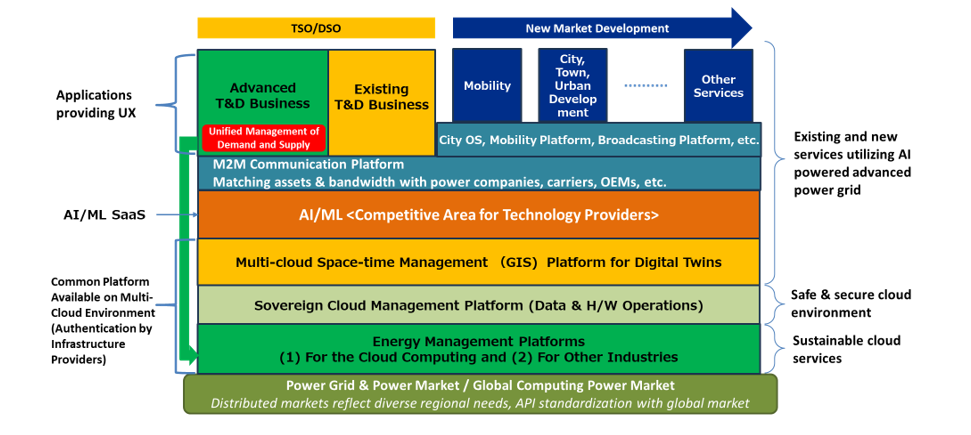
Figure 6 - Collaboration Framework for Electro-Cyber Integration
Conclusion
The rise of digital platforms has changed the world. However, in the future cyber-physical society, both digital platforms and power system operators will play critical roles in driving innovation towards the human-centric industrial revolution that I call "Utility 3.0." My conclusion is that collaboration between these two domains will be key to shaping a better future.
I would like to express my gratitude to everyone involved, especially Professor Hiroshi Esaki of the University of Tokyo for his support of the cyber-first approach, the hyperscale cloud providers, Mr. Jack Dangermond of Esri for his insight into GIS implementation of the digital twin, and the "Electro-Cyber Integration Project Team" of TEPCO Power Grid, supported by Accenture and Bitmedia Corp. along with its President, Mr. Masaharu Takano, for his knowledge in workload shifting using Kubernetes. I also thank the Distributed Market Design Working Group, led by Mr. Hikaru Yamada (Sprint Capital) and Mr. Manabu Inoue (Mitsubishi Heavy Industry), for their valuable insights into the effectiveness of nodal price markets in our distribution system.
References
- Hiroshi Okamoto, et al. “The New Role of the Electric Power Systems in Society 5.0: Harnessing the Future of the Human-Centered Industrial Revolution through Electrification of the Globe”, IEEE Electrification Magazine (to be appeared)
- Kubernetes Homepage by Cloud Native Computing Foundation (CNCF)
- Hiroshi Okamoto, "Envisioning the future driven by the 4th Industrial Revolution: Electrification, Network Convergence, Vehicle to X and Utility 3.0"
- Hiroshi Okamoto, “The Cambrian Explosion of Mobility X”
Banner & thumbnail credit: and machines on Unsplash
